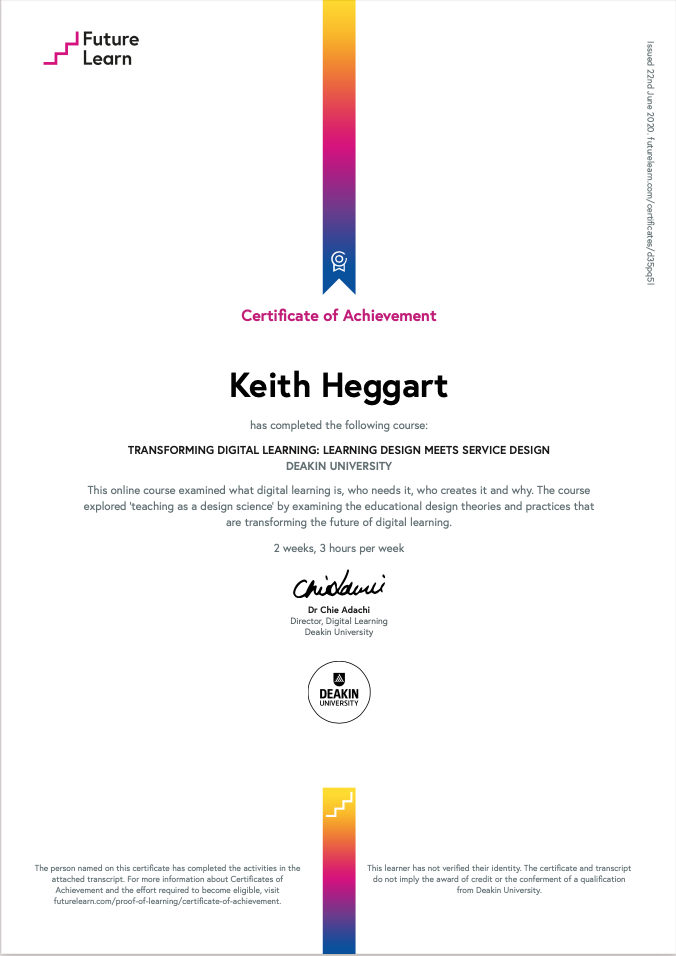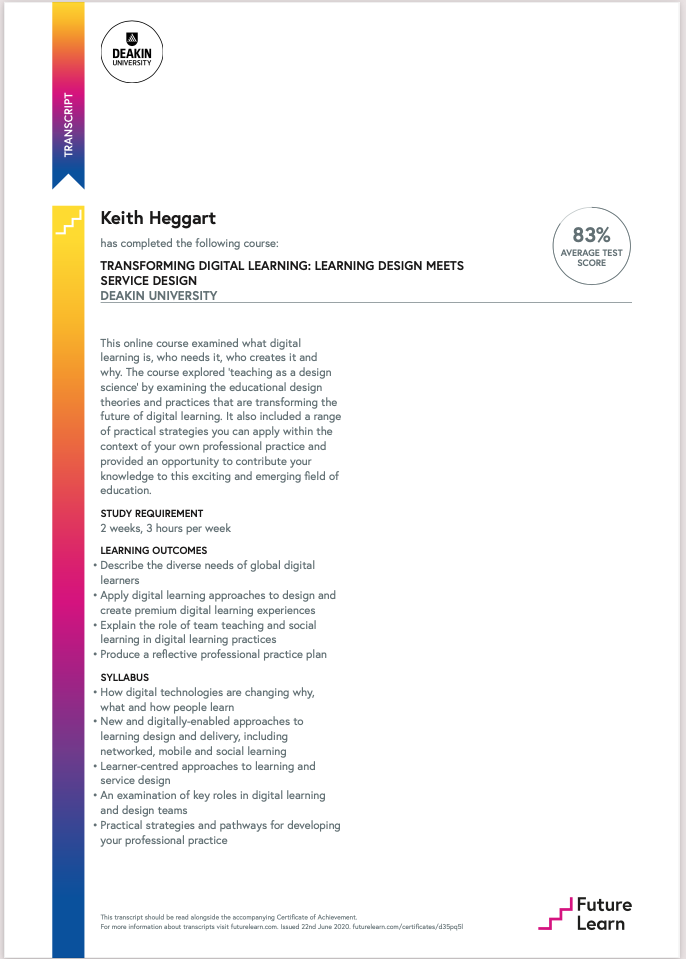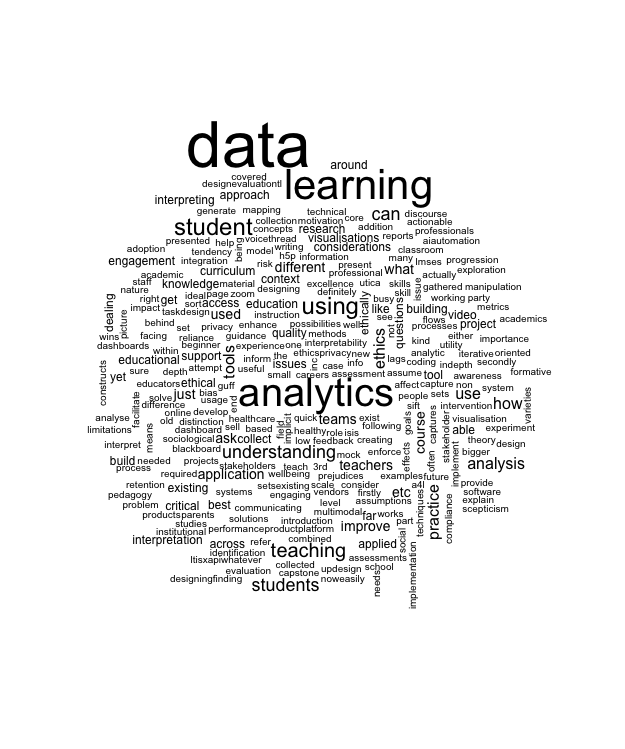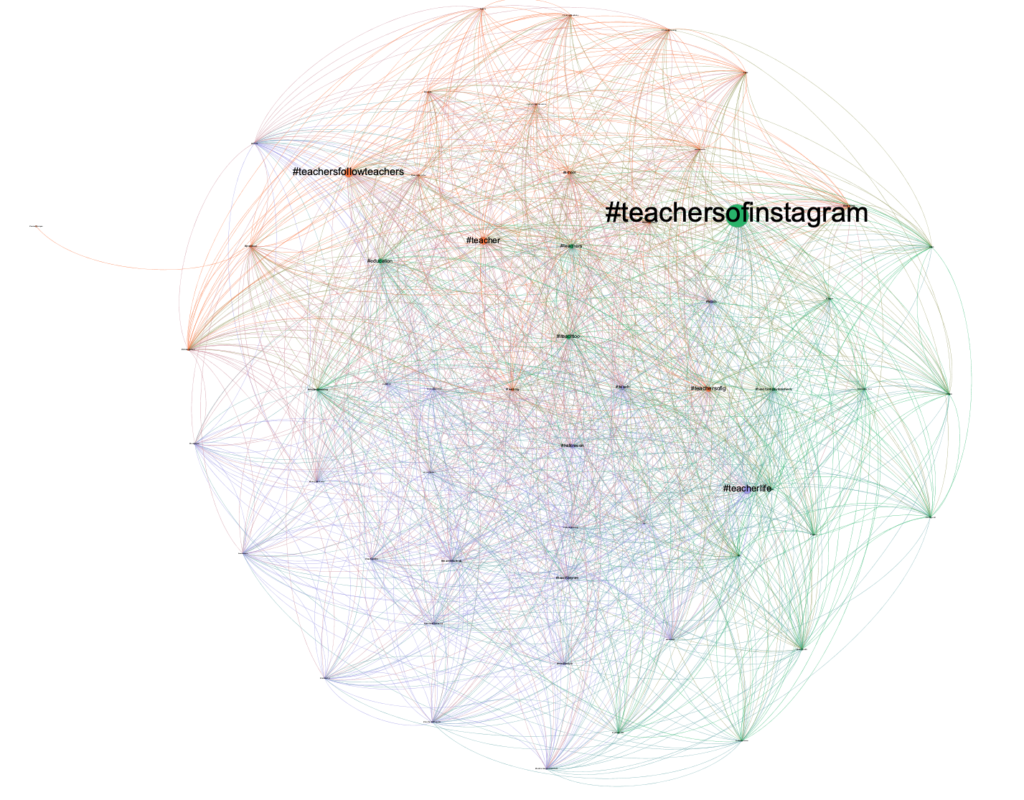An understanding of the constraints and benefits of different technologies.
Over the last five years, I have worked as a learning designer assisting academics to make effective use of learning management systems, such as Google Classroom (see Heggart & Yoo, 2018; Yoo & Heggart, 2019), Blackboard and Canvas. The largest project that I worked on in this field was the UTS Online Renovation Project, in 2017-2018. In this project, I reviewed more than 100 subject sites (built in Blackboard) and determined whether they met the expected and desired thresholds for UTS Learning. Where they did not, I met with academics on a one to one basis (I met with more than 40 academics this way) and worked with them to redesign and redevelop their sites. Based on student feedback, one of the key things that I changed was the navigation structure of the individual sites. Each subject had their own idiosyncratic structure – and this was something that frustrated students. Working with academics, I instituted a common navigation structure that students found more accessible – student engagement (measured through click on each site) increased by 10% after this change.
Technical Knowledge and Ability in the Use of Learning Technologies
As part of my developing knowledge and understanding about the way we use technology to improve teaching and learning, i have undertaken a lot of valuable professional development. In 2020, I became an Adobe Creative Educator (Level 2), as well as an Adobe Campus Leader (although I think this program is now discontinued). I particularly valued the courses available on the Education Exchange, although I did find them quite simple and superficial in many respects. One course, about designing for online learning, was a good introduction, but I felt that it lacked the complexity with which online learning should be treated. A better course, I feel, is the one offered by FutureLearn and UCL, because it dives more deeply into some of the challenges teachers face, including how technology can ameliorate workload, which is one of the reasons I know that academics don’t always embrace learning technology.
I have also been interested in moving more from the ‘front-end’ of technology towards the ‘back-end’. By this, I mean that I am studying a range of topics like machine learning, learning analytics and data visualisation. I think that, as the worlds of technology and education become ever more enmeshed, educators need to develop, at the very least, basic data literacy skills, and if I am going to be teaching educators, then I should do that too. For this purpose, I’ve found the IBM Developer Skills Network to be invaluable. I’ve taken a number of introductory courses on data visualisation through this provider, and I’ve found them to be a good starting point, but there is always a massive conceptual jump between the simple examples provided in these courses and actually applying what you’ve learned in your own context. I’ve started doing some basic data visualisations based on network analysis, which I hope will inform my learning design work in the future.
I also undertook a course in designing a chatbot, using IBM’s Watson application. This makes use of machine learning to read a user’s response, and provide an appropriate comment. I can see this kind of AI assistant being of use in classrooms, especially online ones, in the future.
Supporting the Deployment of Learning Technologies
I have worked in 2018-2020 to support the deployment of the Canvas LMS at UTS. By doing this, I worked as an adjunct to the Institute of Media and Learning at UTS, alongside learning designers and technology specialists from the LX Team. My role was instruct academics in how they might transform the online learning environment form their previous LMS into something better suited for meeting the demands of students. As part of this, I worked with 15 academics in three workshops from the School of International Studies and Education. I also undertook two workshops with 12 academics from the Faculty of Law. Each workshop lasted three hours. In the first workshop, I introduced academics to the LMS, and then, using Laurillard’s (2013) conception of blended learning, I guided them through a process in designing their course, including considering how to build in blended and interactive learning elements. The next two workshops were made up of 1:1 assistance and guidance.
The main challenge that I faced related to convincing the academics to focus less on the content (what student were going to learn) and more on the student experience (what and how students learned the material). One of the best ways to do this was to make use of the ‘student view’ tool within the Canvas LMS – and ask the academics to pretend to be students in each other’s courses, and see how comfortable they felt. This empathic design meant that academics could make changes to their course design to better fit UTS’s model of teaching and learning.
References
Bruff, D. (2019). Intentional tech: Principles to guide the use of educational technology in college teaching. West Virginia University Press.
Heggart, K. R., & Yoo, J. (2018). Getting the most from Google Classroom: A pedagogical framework for tertiary educators. Australian Journal of Teacher Education, 43(3), 9.
Laurillard, D. (2013). Teaching as a design science: Building pedagogical patterns for learning and technology. Routledge.
Martin, G., Heggart, K., & Bell, M. (2018). Looking at and beyond scale: a relational approach to faculty adoption and use of a LMS. Presentation at AARE Conference, 2018, Sydney.
UTS. (2020). What students learn. Model of learning. UTS. https://www.uts.edu.au/research-and-teaching/learning-and-teaching/uts-model-learning/what-students-learn





Many thanks for this – learned a lot
Thanks Cath!
Dear Kheggart, let me congratulate you for this wonderful start, by no means it is a ‘very rough’ draft. I enjoyed reading it and it is very well put together. As i was reading it i wanted to know more ….eg. when you mention the lack of experience with certain things and you talk about doing various online courses and certificates, how was your experience? would be good to briefly reflect on that. It can be very helpful for others to know about it. Would be cool to eventually see references and evidence which am sure you will incorporate (i am just being very nit-picky). Also any possibility of proving an online link to some of the content you have created instead of just a screenshot? (or due to privacy you can’t ?) always good to share some of your work if you can.
This draft is way better than my first draft 🙂 so excited for your journey.
Best wishes….Raj